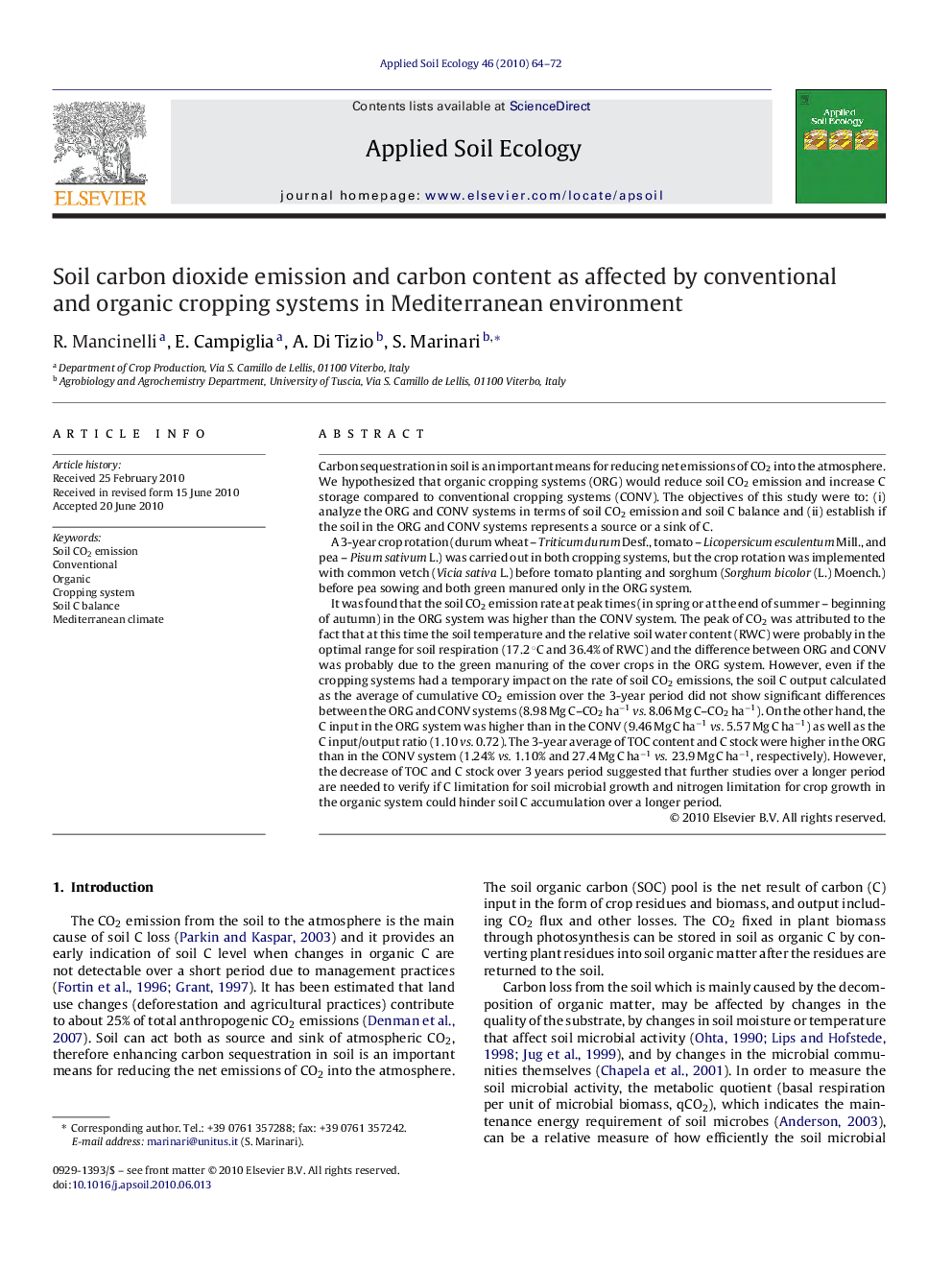| کد مقاله | کد نشریه | سال انتشار | مقاله انگلیسی | نسخه تمام متن |
|---|---|---|---|---|
| 4382769 | 1304230 | 2010 | 9 صفحه PDF | دانلود رایگان |

Carbon sequestration in soil is an important means for reducing net emissions of CO2 into the atmosphere. We hypothesized that organic cropping systems (ORG) would reduce soil CO2 emission and increase C storage compared to conventional cropping systems (CONV). The objectives of this study were to: (i) analyze the ORG and CONV systems in terms of soil CO2 emission and soil C balance and (ii) establish if the soil in the ORG and CONV systems represents a source or a sink of C.A 3-year crop rotation (durum wheat – Triticum durum Desf., tomato – Licopersicum esculentum Mill., and pea – Pisum sativum L.) was carried out in both cropping systems, but the crop rotation was implemented with common vetch (Vicia sativa L.) before tomato planting and sorghum (Sorghum bicolor (L.) Moench.) before pea sowing and both green manured only in the ORG system.It was found that the soil CO2 emission rate at peak times (in spring or at the end of summer – beginning of autumn) in the ORG system was higher than the CONV system. The peak of CO2 was attributed to the fact that at this time the soil temperature and the relative soil water content (RWC) were probably in the optimal range for soil respiration (17.2 °C and 36.4% of RWC) and the difference between ORG and CONV was probably due to the green manuring of the cover crops in the ORG system. However, even if the cropping systems had a temporary impact on the rate of soil CO2 emissions, the soil C output calculated as the average of cumulative CO2 emission over the 3-year period did not show significant differences between the ORG and CONV systems (8.98 Mg C–CO2 ha−1vs. 8.06 Mg C–CO2 ha−1). On the other hand, the C input in the ORG system was higher than in the CONV (9.46 Mg C ha−1vs. 5.57 Mg C ha−1) as well as the C input/output ratio (1.10 vs. 0.72). The 3-year average of TOC content and C stock were higher in the ORG than in the CONV system (1.24% vs. 1.10% and 27.4 Mg C ha−1vs. 23.9 Mg C ha−1, respectively). However, the decrease of TOC and C stock over 3 years period suggested that further studies over a longer period are needed to verify if C limitation for soil microbial growth and nitrogen limitation for crop growth in the organic system could hinder soil C accumulation over a longer period.
Research highlights▶ Mediterranean climate: soil CO2 emission peak is in spring or at the end of summer. ▶ Optimal range for soil respiration: 17.2 °C and 36.4% of relative water content. ▶ Soil carbon input/output ratio is higher in organic than in conventional system. ▶ C and N limitation for microbial/plant growth could hinder soil C accumulation.
Journal: Applied Soil Ecology - Volume 46, Issue 1, September 2010, Pages 64–72